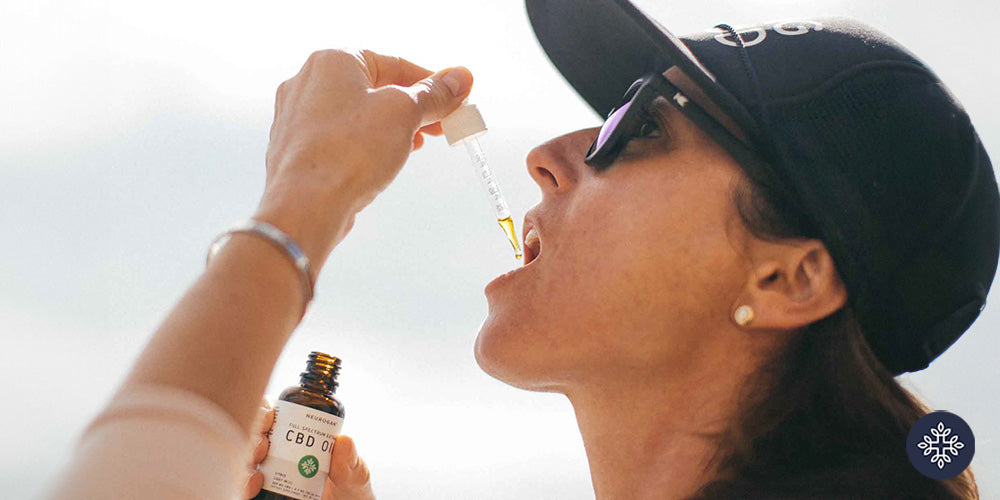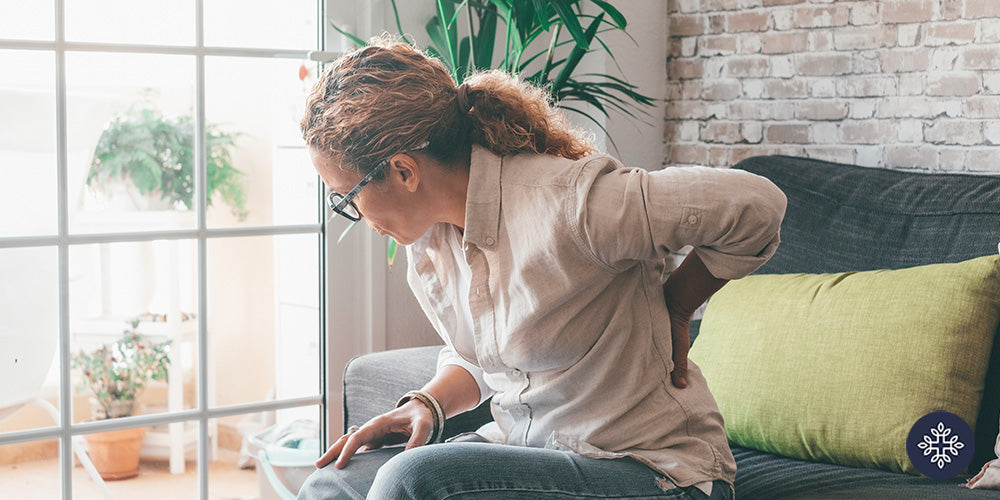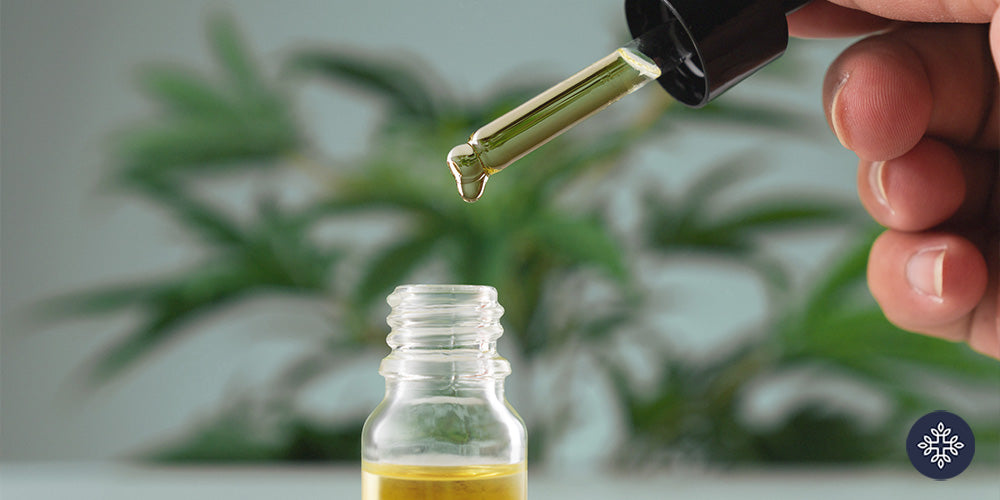Adding cannabidiol oil to your wellness routine can change how you approach health. But what is this oil that everyone swears by?
Extracted from the cannabis plant, cannabidiol has a plethora of health benefits without the psychoactive effects associated with its cousin, tetrahydrocannabinol (THC).
CBD comes in many forms, such as gummies, capsules, and our current focus, oil, sometimes called tincture. If you’re new to CBD drops or can’t seem to have any luck with the one you bought, you’ve found the right article.
The key to unlocking CBD's full potential lies in how it is consumed, timing, dosage, and, of course, the quality of the CBD product itself.
Sublingual vs. Oral CBD: Which is Faster?
The fastest way to absorb cannabinoids is through sublingual administration — placing drops under the tongue. The compounds are absorbed directly into the bloodstream via the mucous membranes, producing effects within minutes.
This is faster than swallowing CBD in oil or capsule form or mixing CBD with drinks. In those cases, the CBD passes through the digestive system, which typically takes 20 to 45 minutes before the effects are noticeable.
During digestion, the compound is broken down by stomach acids and processed by the liver in a phase known as first-pass metabolism. In this process, the liver metabolizes CBD into various by-products, which delays the onset of effects but can extend their duration.
Understanding how our bodies process CBD can help you choose the best method of consumption based on how quickly and how long you want the effects to last.
How to Take CBD Drops

Adding CBD oil into your wellness routine can be a transformative experience, provided you understand the nuances of timing, dosage, and methods of ingestion.
Here's a guide to help you navigate the process of taking CBD:
Timing and CBD Dosage
Finding the right timing and dosage is key for maximizing your benefits. For general wellness, support of the endocannabinoid system, mood enhancement, and even focus, it’s better to stick to lighter doses of CBD (5-10 mg) in the morning.
At higher doses (40 mg and above), some people report feeling a sense of heaviness due to deep relaxation, which can interfere with daily productivity. It's better to take higher doses of CBD in the evening to support sleep or relieve discomfort.
Take CBD with Food for Better Absorption
Taking CBD supplements with food enhances their absorption due to the fat-soluble nature of cannabinoids.
Cannabinoids dissolve in fats rather than water, which influences how these compounds are absorbed and metabolized in the body.
When taken with food, particularly meals containing healthy fats, you create an ideal environment for the CBD to dissolve. This process makes for a more efficient passage through the digestive system and into the bloodstream.
Consuming CBD with a meal may slow the absorption process slightly, leading to a prolonged release of CBD into your system, but it can extend the duration of its effects.
Alternatives for Those Averse to Oil Droppers
While oil droppers or tinctures are a common way to consume CBD, there are other delivery methods.
For those who don’t love the earthy flavor of oils that are typically associated with full spectrum CBD, which also include the flavor-packed hemp terpenes, CBD oil capsules offer a great alternative to mask the flavor.
These capsules contain CBD-infused oil combined with a carrier oil, such as MCT or hemp seed oil, or coconut oil, encapsulated in a digestible form. This method simplifies dosage and eliminates the taste factor, which could be a more convenient form for some users.
Mix CBD into Your Foods or Beverages
While sublingual administration is the most efficient way for taking CBD orally, mixing CBD into your foods or drinks is another way to help max the flavor of full spectrum oils or broad-spectrum CBD extracts, which, despite being more efficacious due to their cannabinoid and terpene content, may have a potent, earthy taste that some find unpleasant.
Smoothies, sauces, and dressings are excellent vehicles for CBD, blending seamlessly with other ingredients.
Consistency is Key
Consistency is a must for the effective use of CBD due to its cumulative impact on the endocannabinoid system (ECS).
CBD interacts with the ECS by influencing its receptors, though not always by directly binding to them.
Instead, CBD is thought to modulate the activity of the ECS's cannabinoids, known as endocannabinoids, and enhance the body's natural responses to stress, pain, and other stimuli. This modulation helps the ECS in maintaining balance across various systems, contributing to overall well-being.
Combine CBD Drops with Different Delivery Methods
Combining CBD wellness oil with different delivery methods, such as CBD balms and salves, offers a holistic approach to tackle discomfort like sore muscles and joints.
CBD products applied directly to the skin can target localized areas without entering the bloodstream, offering focused relief to specific areas. You can even create your own CBD salve or topical by infusing CBD with soothing ingredients like shea butter, beeswax, and essential oils for a personalized touch.
How to Use CBD for Pain

We want to be clear: the FDA has not approved CBD as a treatment for these pain-related issues. However, it’s hard to ignore the many people who find CBD helpful in addressing pain.
Here’s how you could make the most of CBD to manage your discomfort.
Chronic Pain
At the root of many chronic pain conditions lies inflammation, which can be further exacerbated by a lack of sleep and mood. Taking CBD helps to support the ECS, which is involved in regulating processes involved with inflammation, sleep, mood, and even pain perception.
Joint Pain
Use CBD drops regularly, either once or twice a day, to maintain a consistent level of CBD in your body for ongoing support of back and joint pain.
For localized relief for stiff joints, you can also apply a CBD balm directly to the painful joint.
Nerve Pain
Using CBD for nerve pain has become increasingly popular as more research shows a positive relationship between CBD and nerve-related conditions [1].
You can apply CBD topically to the affected area or use drops of CBD to absorb it quickly.
How to Use CBD for Anxiety
CBD is best known for its relaxing and feel-good effects, which many people use in addressing anxiety, likely due to its interaction with the ECS, which is involved with mood and may influence serotonin receptors in the brain, a neurotransmitter associated with mood and anxiety regulation [2].
We need to address that research on CBD and anxiety is still in its early stages, and findings are not universally conclusive, which means it shouldn’t be your only means of addressing your mental health. And those with anxiety should speak with a health care professional for a diagnosis and treatment plan.
How to Use CBD for Sleep
While research on CBD and sleep is still in its early stages, there are promising findings that suggest it may influence various factors that contribute to sleep quality [3].
The ECS is also involved in the balance of a healthy sleep cycle. Through the ECS, CBD may contribute to the promotion of a balanced sleep pattern.
CBD has also demonstrated anxiolytic (anxiety-reducing) effects in some studies [4]. CBD may indirectly contribute to improved sleep quality with soothing effects that may keep those anxious late-night thoughts and stress at bay.
We recommend reading the label of the CBD product you are using for a more precise recommendation on when to take CBD for sleep, but most products should be taken 30 minutes to an hour before you hope to fall asleep.
We also want to note that CBD drops can sometimes have a naturally bitter flavor due to the natural hemp flavor, so we recommend taking CBD drops before brushing your teeth.
How to Use CBD Drops vs Oil

When discussing CBD, the terms "drops" and "oil" are often used interchangeably, both referring to a liquid CBD product that is taken orally. However, the term "drops" specifically refers to the method of dosing and application. Here's a straightforward guide on how to use them:
Due to the nature of a dropper, it can be difficult to achieve precise dosing in every drop.
CBD can come in the form of CBD topicals, CBD capsules, and CBD vape juice. Capsule CBD-infused oil offers more precise dosing, as each capsule contains a precise dose. CBD balms are recommended specifically for people who want localized relief.
Smoking CBD, like smoking anything, comes with its health risks, but it is an option for someone who prefers using a vape pen and is interested in inhaling CBD.
How Much CBD to Take for Beginners

Taking CBD-infused oil can feel a bit intimidating when you’re a beginner.
Determining the appropriate dose of CBD to consume for new CBD users can be a personalized process, as individual responses to CBD vary, so you should expect to experiment to find your “Goldilocks Zone.”
Factors like your body weight, metabolism, and the specific reason for using CBD influence the appropriate dosage.
No matter the CBD product, we advise CBD beginners to start with a low dose of 5-10 mg of CBD and gradually increase the dosage based on how your body reacts. If you want to see results, we recommend incorporating CBD into your daily routine for consistent use.
The Takeaway: How to Take CBD Drops
Whether you prefer CBD gummies, creams, capsules, or any other CBD products, it’s important to buy from a reputable brand with safe ingredients, third-party testing, and established efficacy. Following the product’s directions will ensure that you are consuming or using the product in its intended way.
CBD can change the way you approach your health and wellness. When shopping for CBD products, do your research, especially if you are hoping CBD will benefit any condition you have.
CBD products like oils have different formulas, dosages, and price points. Cheap CBD may not contain the same premium ingredients that you need for the desired effects you’re hoping for.
Frequently Asked Questions:
How to use CBD-infused oil?
You use CBD by placing the drops of oil under the tongue. This is the fastest way to get endocannabinoids into your system — where they’re absorbed through the mucous membranes and into the bloodstream within minutes.
What is the best way to take CBD drops?
My favorite way to take CBD is through sublingual administration. It provides the fastest onset time and the longest duration times to be convenient for most people’s needs.
How to take hemp oil orally?
Hemp oil is different from CBD-infused oil, as hemp oil typically refers to hemp seed oil, which does not contain cannabinoids but is rich in omega-3 and 6 fatty acids.
You could take hemp seed oil by swallowing a teaspoonful, but it might be best in recipes like salad dressings or mixed into a green smoothie.
How do I apply CBD drops?
CBD-infused oil is usually designed to be taken orally, but some people may choose to apply it to the skin for localized relief by applying drops to the area of discomfort and gently massaging it into the skin until it's absorbed. However, there are better alternatives for this type of application, like CBD balms, lotions, or massage oil.
How to use a CBD dropper?
Most cannabidiol oils come with a dropper for easy and precise dosing. Squeeze the rubber bulb at the top of the dropper to draw the oil into the pipette.
Fill the dropper with the desired amount of oil. Beginners often start with a low dosage, such as a half dropper (0.5 ml), to assess their tolerance and response.
Allow the oil to sit under your tongue for 30 to 60 seconds. You can swallow the remaining oil after holding it under your tongue.
Remember that CBD oil can expire, so if you are not planning on taking it consistently and would rather take it spontaneously, then be sure to check the expiration date, which could affect the taste and efficacy.
References:
- Serpell, M., Ratcliffe, S., Hovorka, J., Schofield, M., Taylor, L., Lauder, H., & Ehler, E. (2014). A double‐blind, randomized, placebo‐controlled, parallel group study of THC/CBD spray in peripheral neuropathic pain treatment. European journal of pain, 18(7), 999-1012.
- Abame, M. A., He, Y., Wu, S., Xie, Z., Zhang, J., Gong, X., ... & Shen, J. (2021). Chronic administration of synthetic cannabidiol induces antidepressant effects involving modulation of serotonin and noradrenaline levels in the hippocampus. Neuroscience Letters, 744, 135594.
- Moltke, J., & Hindocha, C. (2021). Reasons for cannabidiol use: a cross-sectional study of CBD users, focusing on self-perceived stress, anxiety, and sleep problems. Journal of cannabis research, 3, 1-12.
Blessing, E. M., Steenkamp, M. M., Manzanares, J., & Marmar, C. R. (2015). Cannabidiol as a potential treatment for anxiety disorders. Neurotherapeutics, 12(4), 825-836.


